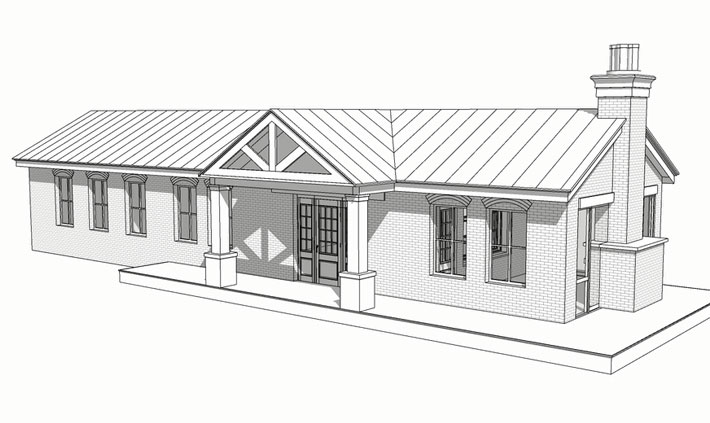Journey with us in part two of our series about the restoration of the Fort Moultrie Ordinance House. From zoning changes to DRB reviews and approvals, learn about how we navigated the design challenges of working on an historic building restoration on Sullivan’s Island.
How the Ordinance House Came to be Restored
In 2017, the property where the Fort Moultrie 1890’s Ordinance House sits was sold by the Anderegg family. This was only after the Sullivan’s Island Design Review Board had approved demolishing the later add-on of the rear shed component and approved the design to uncover and renovate the original brick Ordinance Building and turn it into a small home. Separately, the BZA had to approve the structures classification as a Special Exception. (Under the Sullivan’s Island Zoning, small historic buildings can be classified as a Special Exception, which then allows a second home to be built on the same lot.) Since this property faces the Intracoastal Waterway, the opportunity to build a new home with marsh views completely changed the potential for a new owner to develop the property. All lights were green to go.
The Design Challenges
When we started work, our goals were to create a small, elegant home that exposed as much of the original construction as possible all while doing no harm to the historic building. We planned to add modern systems and features; including an exterior porch with a fireplace, efficient impact rated windows and doors, an efficient HVAC system, and a new electrical system. We designed a luxurious bathroom and a high end kitchen with modern finishes to support a modern island lifestyle, all in contrast to the old charm of the original structure.

One of the original renderings of the vision for the restored Ordinance House.
Restoring and converting a former military-use, 130 year old brick building into a modern residential residence is no easy feat. While we still use brick and wood in home building today, construction and engineering practices have changed greatly since this building was initially constructed. Plus, with over a hundred years of wear and surviving several hurricanes, we needed to shore up the original structure to make it compliant with modern building codes. We were also required to implement a higher standard of occupant comfort and safety.
It was going to be tricky to navigate the implementation of these features without damaging or changing the historic structure, but we were up for the challenge. We knew it was our duty to not only make the home comfortable and serene for modern day life, but we also knew this little brick building was a fragile remnant of a historically significant part of the iconic Fort Moultrie Military Complex and an important piece of island history.
Read about the first part of this story and the history of the 1890’s Ordinance House in: Part One: The History of the Ordinance House. Stay tuned for the final installment of our series, Part Three: What Happens When You Start Renovation of a Historic Building.

